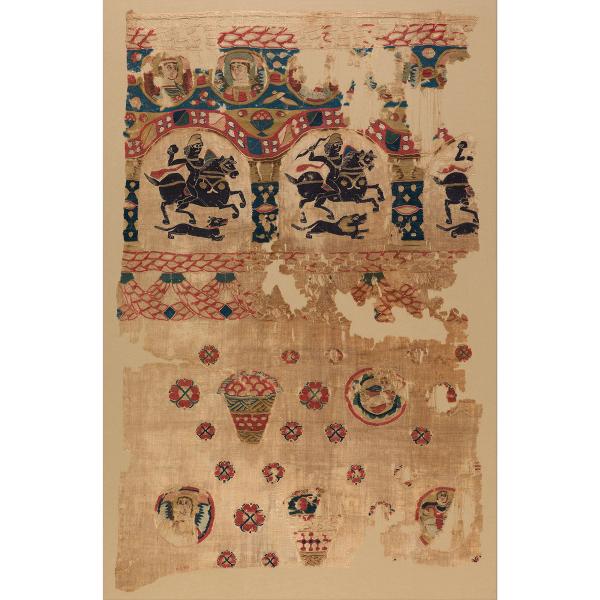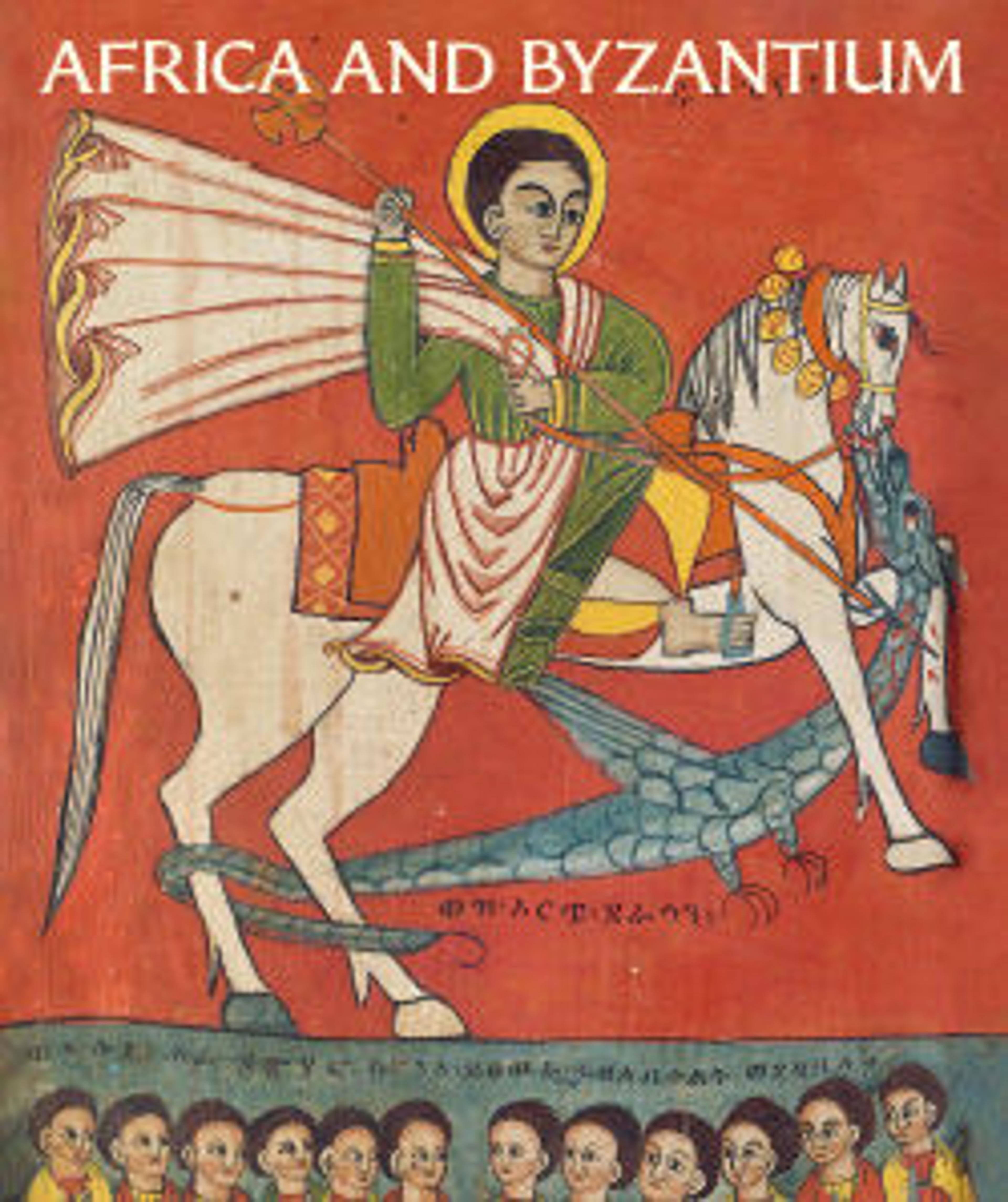Fragment from a Coptic Hanging
Early textiles such as this, woven by Coptic Christians, have survived the centuries due to the dry climate and the Christian perpetuation of the Egyptian practice of burying the dead in garments sometimes shrouded in large cloth wrappings. Such textiles were woven in well‑organized workshops that continued to function in the early Islamic period.
Artwork Details
- Title: Fragment from a Coptic Hanging
- Date: 5th century
- Geography: Attributed to Egypt
- Medium: Linen, wool; plain weave, tapestry-weave
- Dimensions: Textile: L. 40 15/16 in. (104 cm)
W. 24 13/16 in. (63 cm)
Mount: L. 46 1/4 in. (117.5 cm)
W. 31 1/8 in. (79.1 cm)
D. 2 1/4 in. (5.7 cm)
Wt. 30 lbs. (13.6 kg) - Classification: Textiles-Rugs
- Credit Line: Gift of George F. Baker, 1890
- Object Number: 90.5.905
- Curatorial Department: Islamic Art
Audio

541. Curtain Fragment with Riders
Andrea Myers Achi, Mary and Michael Jaharis Associate Curator of Byzantine Art
NARRATOR: This approximately fifteen-hundred-year-old cloth owes its preservation to Egypt’s extremely dry climate. Andrea Myers Achi, Mary and Michael Jaharis associate curator of Byzantine art at The Met.
ANDREA ACHI: At the very top are roundels with angels with plump faces, and then beneath that scene you have these riders. They might be military people or people on a hunt, holding rocks and arrows. They appear to be quickly going across the scene, and they have the hunting dogs beneath them. And then at the very bottom you see baskets of fruits, but then also more angels looking in lots of different directions, and then at the bottom right is another rider, and he has this pink and beige cloth rendering.
NARRATOR: Egypt contained many cultures and ethnicities. People came to Egyptian cities from across the Mediterranean, down the Nile from Nubia and beyond, and across the Red Sea from East Africa and India.
ACHI: What’s really interesting to me about this textile is you have people with pink cheeks and beige cloth, but then you also have these black riders. Within scholarship there was this idea that the riders didn’t represent people, and the only people that we see are the beige angels and the rider below. But one thing to consider is the possibility that we're looking at different types of people that were part of communities.
NARRATOR: This textile has lived three lives. First, a skilled fifth-century artisan wove it as a curtain, likely as a commission, to hang in an elite household. Imagine how the weaver’s fingers would have worked the tiny threads of linen and wool on the loom, or how the riders would have danced in the breeze in a doorway. Next, someone wrapped it around a body, beginning its second life as a burial shroud. Finally, The Met received it as a donation from a collector in 1890.
More Artwork
Research Resources
The Met provides unparalleled resources for research and welcomes an international community of students and scholars. The Met's Open Access API is where creators and researchers can connect to the The Met collection. Open Access data and public domain images are available for unrestricted commercial and noncommercial use without permission or fee.
To request images under copyright and other restrictions, please use this Image Request form.
Feedback
We continue to research and examine historical and cultural context for objects in The Met collection. If you have comments or questions about this object record, please contact us using the form below. The Museum looks forward to receiving your comments.
